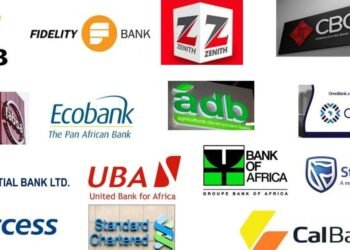Ghana has maintained its cocoa producer price, the price at which the country’s cocoa sector regulator buys cocoa from producers for the 2021/2022 cocoa crop season whereas its counterpart, Cote d’Ivoire reduced its cocoa producer price.
While Ghana’s farm gate cocoa price stands at GHS660 per 64kg bag, that of Cote d’Ivoire has declined by 17.5 per cent to 825 CFA francs (1.25 euro) per kilo, at the opening of the 2021/2022 cocoa season. The Ivorian price means that cocoa is now selling at the 2019/2020 price (825 CFA francs).
For Cote d’Ivoire, this compares with the cocoa producer price of 1,000 CFA francs (1.52 euros) per kilo in 2020, which critics indicate this price was fueled by the elections. In the case of Ghana, the current cocoa producer price reflects a 28 per cent increase in the price compared to GHS515 during the 2019/2020 crop season.
It has been almost a year now, since the joint Initiative between Ghana and Cote d’Ivoire aimed at combating farmer poverty. By this pact, the two countries agreed to pay a ‘Living Income Differential (LID)’ of $400 per metric tonne.
LID has come to stay
Ghana’s Minister of Food and Agriculture, Dr. Owusu Afriyie Akoto is on record to have said that because of this premium price on cocoa producer supplies, Ghana and Cote d’Ivoire are now better-off than their peers in other cocoa producing countries as a result of the initiative.
“This price is the highest within the sub-region. This demonstrates the government’s commitment to sustain the interest of the cocoa farmer in producing cocoa and also to improve the well-being of cocoa farmers.
“The producer price of cocoa was maintained when all cocoa producing countries were contemplating a reduction in their farm gate prices following a slump in the terminal cocoa market as a result of the Covid-19 pandemic.”
Dr. Owusu Afriyie Akoto
That notwithstanding, the typical cocoa farmer continues to struggle. Farmers from both countries are said to receive only 6 per cent of the $100 billion annual global cocoa and chocolate market. The rest of which is locked up by the big industrialists.
According to a World Bank study, more than half of the farmers in Cote d’Ivoire live below the poverty line. Similarly, in Ghana, there are as many as 800,000 families that depend on the ‘brown gold’.
To alleviate this problem, the Chief Executive Officer of Cocobod, Mr Joseph Boahen Aidoo is cited to have said that: “the Living Income Differential (LID) has come to stay. We have the support of major international stakeholders including the European Union, International Cocoa Organization and the World Cocoa Foundation.”
Cocoa Farmers pension scheme begins
He also disclosed that the Cocoa Farmers Pension scheme, which took off on October 1, 2021 in Western South and the Ashanti regions will help farmers enjoy a decent pension when they retire from active farming.
Ghana’s cocoa output soared despite the ravaging impact of the COVID-19 pandemic. Sealed cocoa beans purchased stood at 1,045,500mt, breaking the 10-year-old record of 1,024,526mt set in the 2010/2011 crop year.
Ghana and Cote d’Ivoire are responsible for about 65 per cent of the world’s raw cocoa beans. Thus, after long decades, it is imperative to write a different story about the cocoa sector and the cocoa farmer in both countries. A story that builds hope for the farmer, and not one that dashes the little hope left.
Higher priced cocoa supplies are a big incentive for the cocoa farmer and a leap towards poverty reduction.
READ ALSO: JUSAG calls on government to take action on recommended salaries within two weeks





















